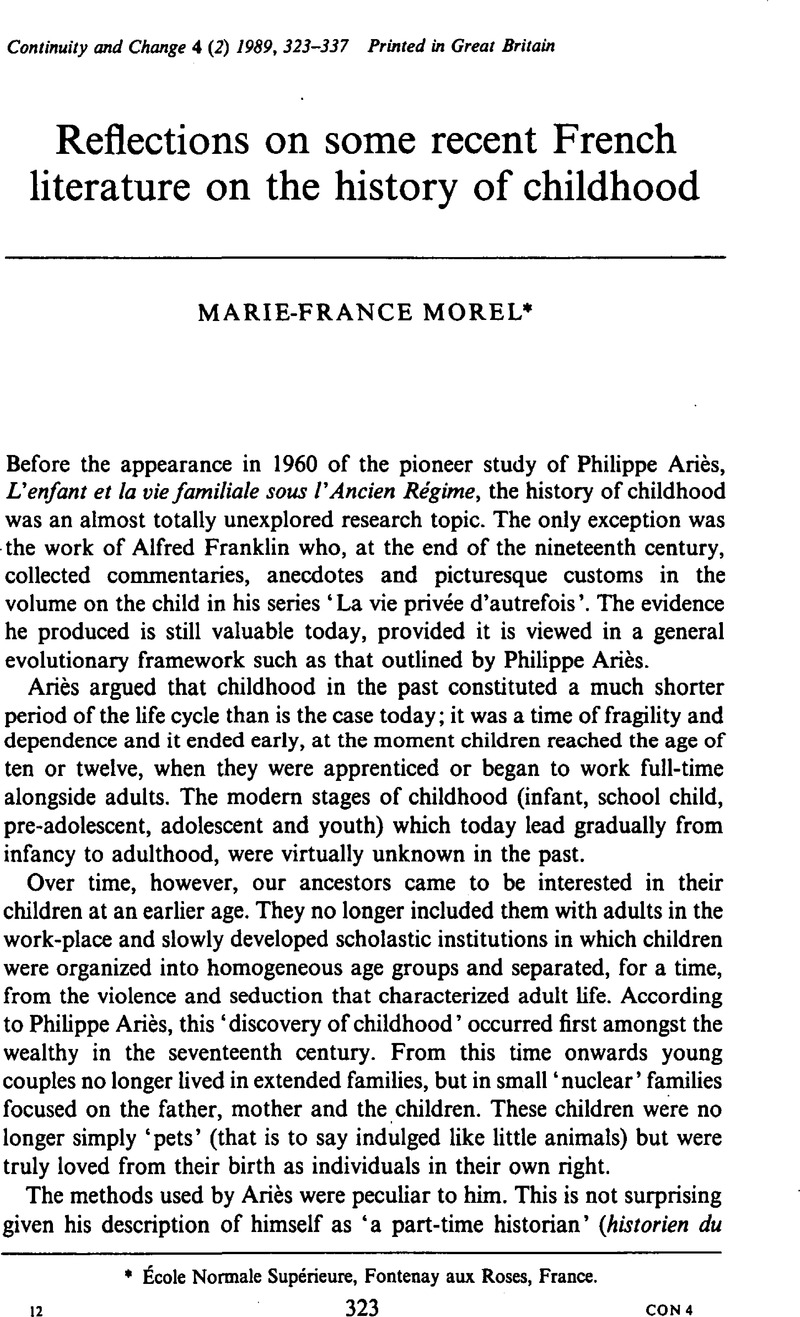Crossref Citations
This article has been cited by the following publications. This list is generated based on data provided by Crossref.
Ben-Amos, Ilana Krausman
1995.
Adolescence as a cultural invention: Philippe Ariès and the sociology of youth.
History of the Human Sciences,
Vol. 8,
Issue. 2,
p.
69.
Woods, Robert
2003.
Did Montaigne Love His Children? Demography and the Hypothesis of Parental Indifference.
The Journal of Interdisciplinary History,
Vol. 33,
Issue. 3,
p.
421.
PELLING, MARGARET
2016.
John Graunt, the Hartlib circle and child mortality in mid-seventeenth-century London.
Continuity and Change,
Vol. 31,
Issue. 3,
p.
335.





